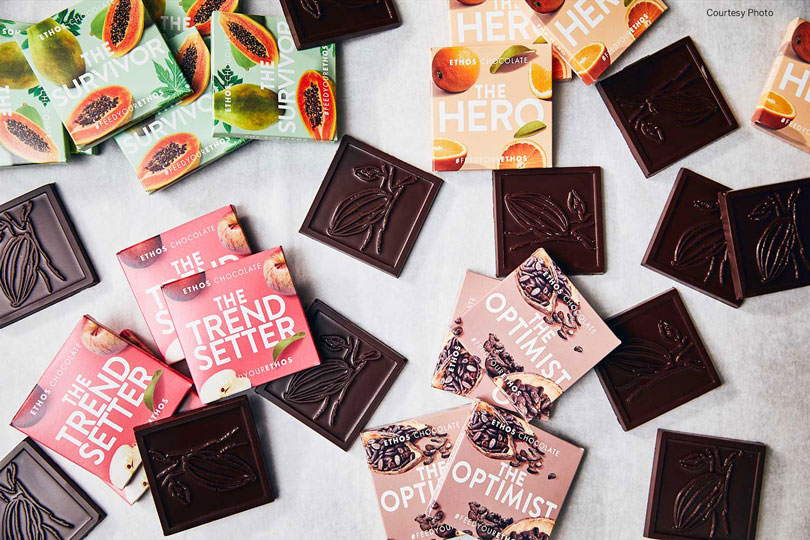By Justin Walker
Communications Specialist
It’s hard to walk down an aisle in the grocery store and not find a “GMO-free” label.
Several food brands have capitalized on the misinformation surrounding genetically modified organisms (GMOs) in marketing campaigns. But one product has taken the opportunity to share the importance of GMOs.
Ethos Chocolate debuted this month and has generated headlines for promoting GMOs rather than marketing their absence.
The product was developed by A Fresh Look, a nonprofit representing 1,600 growers committed to promoting GMO farming methods. These family farmers are dedicated to showing how GMOs are safe for consumption, while also being environmentally friendly.
A Fresh Look has made an effort to engage with consumers on the benefits of GMOs from a farmer’s perspective. No one knows their farms better than they do, Rebecca Larson, lead scientist for A Fresh Look, said. But they needed a campaign to truly get their foot in the door.
“They were looking for something punchy and a little more in your face, versus their social media dialogue that has been going on in the last two years,” Larson said.
Enter Ethos Chocolate.
A Fresh Look launched the chocolate bars in a promotion leading up to Valentine’s Day, giving away thousands of the product through its website.
Ethos Chocolate comes in four flavors, each representing a crop that can benefit from GMOs, Larson said.
“We were looking for a way to highlight past, current and future potential of GMO farming,” she said.
The final result was the Optimist, Survivor, Hero and Trendsetter, each telling the story of crops—cacao trees, papayas, oranges and apples, respectively.
GMOs have and can continue to benefit these and many other crops, Larson said. The papaya industry in Hawaii was nearly destroyed by the papaya ring spot virus in the 1990s, but quick work by agricultural scientists saved them.
“To be able to introduce a small piece of a virus into that plant to help it recognize the virus and break it down completely pesticide-free was a really great sustainability story that I don’t think a lot of consumers are aware of,” she said.
Apples also benefit from GMOs, Larson said. Recent advancements have reduced bruising and browning in the fruit, making them more appetizing for consumers and cutting down on food waste.
Citrus greening has impacted about 90 percent of the citrus groves in Florida, Larson said.
“There’s really no natural form of tolerance or resistance to that disease within the orange genetics,” she said. “GMO technology could provide a really great way of righting that wrong with the disease, much like papaya.”
The cacao and flavors within the products are not genetically modified, Larson said. The chocolate, however, was produced with beet sugar derived from GMO sugar beets.
The campaign allowed A Fresh Look to introduce the story of GMOs in a unique and concise way and combat misinformation.
“Even those who don’t know much about it, what they have heard is more than likely negative,” Larson said. “This is a real easy way to just introduce the positive side of it and hopefully encourage people to do some more independent research into GMO technology.”
There are no plans to sell the chocolate bars in stores or online, but that doesn’t mean the end for the GMO treats. While originally just an independent one-off promotion, Larson believes Ethos Chocolate may evolve into something that continues to appear every Valentine’s Day or even other holidays.
“For so long, people have been scared to talk about it, because the general perception out there is that GMOs are somehow bad, but when you start looking at the data behind GMO farming, it’s actually very environmentally sustainable,” she said. “To start putting some of those facts and figures out there about how GMO farming can actually be better for the environment than some other farming practices is something we’ve got to do to protect that technology and all of the tools within the farming toolbox.”


Need Jim Hightower to check this out !, and get his opinion also
Thanks